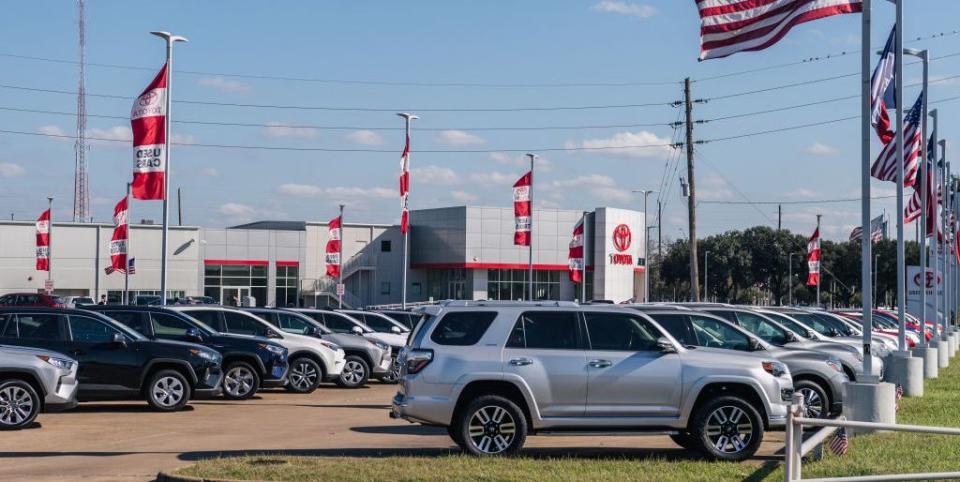New Car Price Keeps Climbing, with Average Now at Almost $47,100

Remember back last spring, when it was shocking news that the average new-car price had reached 40 grand? Good times.
KBB has calculated that the average price of a new car in the U.S. in December was $47,077. That's up from $46,329 in November.
You probably already know the reasons: the COVID-19 pandemic, supply-chain problems, and a chip shortage, along with automakers who decided to build their higher-profit models in a time of scarcity.
It was certainly news in the summer of 2021 when the average price for a new car crossed over the $40,000 threshold, but now that it's 2022, car shoppers would probably love to see those numbers on their car's sticker. That's because the average new car price in the U.S. in December rose to $47,077.
The new average was noted by Kelley Blue Book, which also calculated an amazingly rapid rate of increase for car prices for the past three years. The average price rose just under $1800 in 2019, then just over $3301 in 2020, and then an incredible $6220 in 2021. That's the kind of rate of increase that gets you to new car prices hitting $47,077 in December after they climbed to $46,329 in November.
"Today's environment is essentially unprecedented for the modern auto industry; we have not been in a situation before where demand truly outstrips supply of new vehicles," Stephanie Brinley, an analyst at IHS Markit, told Car and Driver. “This has created a new pricing dynamic that ultimately results in reported average transaction prices increasing."
KBB says the two main factors in this price increase are reduced supply and increased demand, which were caused in part by the pandemic and the related chip shortage. But dealers and automakers are taking advantage of the situation as well. Brinley said cars have gotten more expensive in recent years in part thanks to new technology features, as well as more content that comes standard in entry-segment vehicles.
On the automaker side, we've heard for months that with the chip shortage limiting the number of vehicles they can build, companies shifted production to high-profit models, which means more cars on more lots were the more expensive trims and models. That meant shoppers who were out looking to buy were faced with inventory that was priced higher than they might expect.

 Yahoo Autos
Yahoo Autos 